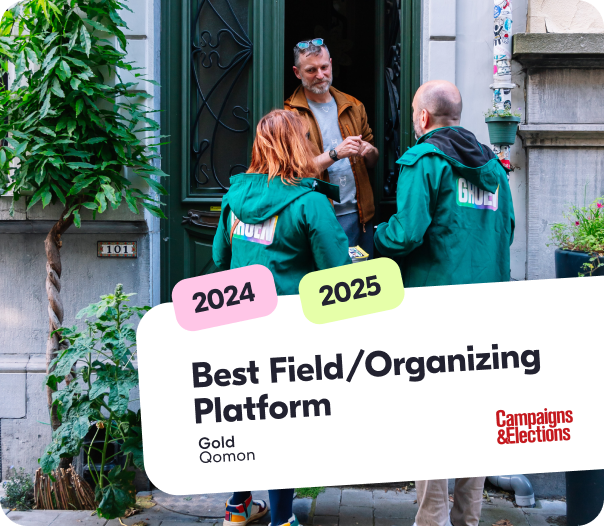What is relational organizing?
Relational organizing is a process through which a volunteer mobilizes its contacts for a cause by using different means of communication such as text, email, phone call, social media, or even an in-person chat. In this way, all the people contacted will begin their action for the volunteer’s campaign or organization.
What is the role of peer-to-peer texting in relational organizing?
Well, to say that technology plays a vital role in relational organizing would be an understatement. It has been observed that vigorous peer-to-peer texting can ensure victory for a candidate. According to research by Columbia University, it was found that the likelihood of voting increased by 8% in the 2018 midterm elections through peer-to-peer texting.
This is why Relational organizing is also referred to as peer-to-peer organizing, because it can be done both digitally and in-person.
Another important term to know is the snowflake model of organizing which was first coined by Harvard professor Marshall Ganz. This model replaces a single leader in a network with interconnected leaders, each having responsibility for a particular aspect of the campaign. Not only is this an effective way of distributing responsibilities, but can also make the entire campaign manageable.
How does it work?
The volunteers of a single cause (such as voting) contact people in their circle, and these people forward the message to the people they are acquainted with, thus the repetition of the same process over and over gives rise to a network effect. This network will now fight for the same cause.
Why is there a need for relational organizing?
It is difficult for people to trust strangers and act upon their say in any matter let alone in the matter of giving a vote. According to the study Turnout Nation: A Pilot Experiment Evaluating a Get-Out-The-VoteSupertreatment, their experiment examined voter turnout based on their captain model. They found out that voters assigned to a captain raised the chance of voter turnout by 17.1%.
HOW US PRESIDENTS ENCOMPASSED RELATIONAL ORGANIZING IN THEIR ELECTORAL CAMPAIGNS
In your opinion, what strategy did Joe Biden adopt that made him win the 2021 elections? It was done entirely with the help of relational organizing. While Donald Trump was focused mainly on door-to-door canvassing and holding in-person rallies during the election cycle, Joe Biden’s campaign was completely virtual, keeping people’s safety in mind during the Covid-19 pandemic.
According to a study, the democratic candidate Biden spent 78.57 million U.S. dollars on civil toned Instagram and Facebook ads and 3.9 million U.S. dollars on uncivil toned social media ads which ensured his victory.

What are the true effects of relational organizing?
In 2016, Dylan Cate recruited 400 volunteers to contact 50k voters to experiment on relational organizing. The results showed a 9% improvement in voter turnout.
Let’s discuss some of the consequences of relational organizing on a community or society:
1: Higher contact rates
It is easier to talk to your neighbors and get the vote out from them than someone who resides in a distanced village or city. Now, during the campaign and even after it is accomplished, the relationship between neighbors is improvised and there is a trust built up enabling them to help each other in the upcoming campaigns.
2: Higher conversion rates
Better contact rates would not only improve relationships but also result in the conversion of more people. If a volunteer contacts people from his list of known people, he would not only have a higher contact rate but also a higher conversion rate. For example, asking your father to volunteer for a campaign would be more beneficial than asking a stranger to do the same thing.
3: No need to mobilize non-supportive voters
Occasionally, asking strangers to get out the vote might be challenging as you are not sure which party they are supporting and they might opt out in the last moment. Relational organizing puts the volunteers at ease as every contact is a known person and there is no fear that the person might not vote.
CONCLUSION:
To sum up, relational organizing no doubt has proved vital in the success of any campaign whether it is related to voting, fundraising, or creating awareness regarding any issue. The major part of relational organizing is communication because connecting with supporters guarantees success. Instead of forming new contacts to get out a vote or funds, the main focus should be on the people already familiar with them as those people would further reach out to their contacts for the sake of peer pressure.
It is necessary to carry out relational organizing through grassroots organizing making sure all the basic steps are fulfilled properly. If the basic levels are neglected, the campaign might fail.












.jpg)
.jpg)

.jpg)




